It’s officially Summer now and the fourth CicLAvia of 2024 (and 53rd ever) is upon us. With a 5-mile straight shot down Western Avenue, this route is not exactly a new route, as it re-traces the CicLAvia route from July 10, 2022 (#39 – South L.A. Western Avenue), but this time, it’s extended further south to Century Boulevard (We love it!). Incidentally, it ends literally right around the corner from where the June 18, 2023 route (CicLAvia #46 – South L.A. Vermont Avenue) ended a year ago where Los Angeles County Supervisor Holly Mitchell held a Juneteenth festival on Century Boulevard to coincide with our regular open streets event. That won’t be happening this year (at least not near the CicLAvia route – Mitchell’s 4th District Juneteenth festival will take place June 21st in Carson), so it’s up to all of us to celebrate Juneteenth – as well as the Summer Solstice – in South Los Angeles, right on Western Avenue.
As usual – see you or not see you on the streets this Sunday!
If you found this Epic CicLAvia Tour guide useful and visit any of these sites, please add the #EpicCicLAviaTour hashtag to any social media post that includes it. The Militant will be glad to re-tweet!
And if you appreciate The Militant’s work, kick him a little love via PayPal! He *hates* asking for money, but you know how it is these days…A Militant’s gotta pay his bills! He sacrifices a lot of his time to do this! Your support is much appreciated!
Support The Militant Angeleno!
https://www.paypal.com/donate/?hosted_button_id=K5XC5AM9G33K8
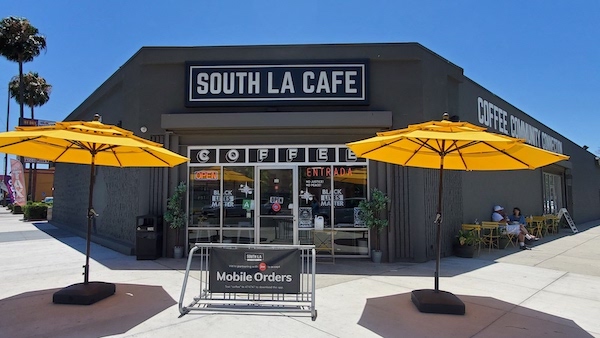
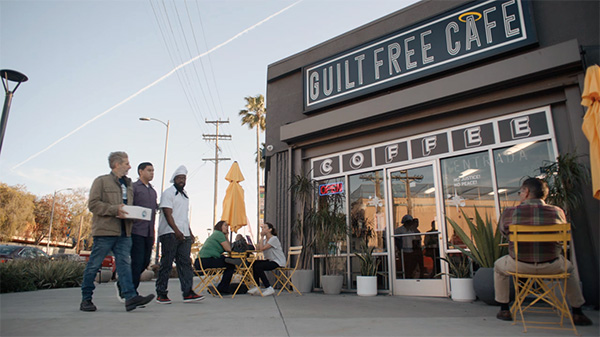
1. South LA Cafe
2019
1700 Browning Ave, King Estates
Opened in November 2019 by owners Celia Ward-Wallace and her husband Joe – both longtime residents of the area – to address food inequality (they also own the South L.A. Market on the other side of the minimall) and create a cultural hub in the neighborhood, South L.A. Cafe not only sells caffeinated fare and pastries, but also provides a venue for open mic and poetry performances. The cafe also sells various clothing which bears “South L.A.” and “South Central” for locals who wish to represent with neighborhood pride (or for those from outside the area who just want to front). South L.A. Cafe also appears (as the competitor establishment “Guilt Free Cafe”) on the final episode (‘Two F*ckin Losers,’ Season 2, Episode 10) of the 2022-2023 Hulu series This Fool.
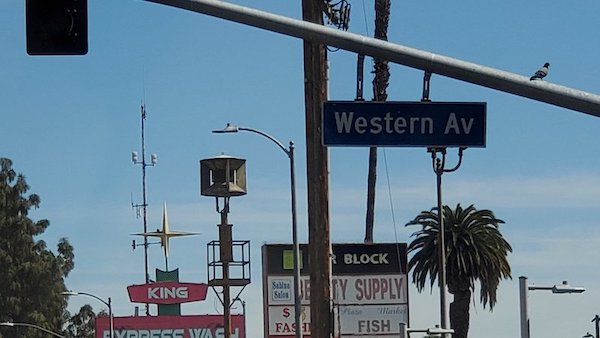
2. Civil Defense Air Raid Siren #60
1940
1662 W Martin Luther King Jr Blvd, King Estates.
If the Russians ever invade Los Angeles, just know that we have 179 Civil Defense air raid sirens in place around the City (which may or may not still work…), like this one along the CicLAvia route, which is identified as Civil Defense Siren #60 at Martin Luther King Jr. Blvd and Western Avenue. Built in 1940, this siren is classified as a Federal Model SD-10, or the “Wire Spool” style.

3. Tejuinos El Pichirilo
2022
4245 S. Western Avenue, Chesterfield Square.
Rolling down Western Avenue, this bright yellow plywood shack stands out from the urban landscape and only bears the words, “Tejuinos El Pichirilo” and a drawing of a smiley face. Tejuinos, a cold fermented beverage made from masa (corn dough, as in the stuff that tortillas and tamales are made out of), are popular drinks from western Mexico that have recently gotten some attention. They taste like a butterscotch-lime margarita (the drink is non-alcoholic, but can be upgraded with tequila (sorry, not provided by Tejuinos El Pichirilo). The proprietor, a gentleman named Elias, told The Militant that he originally started a tejuinos cart in 2020 and later decided to go brick-and-mortar – or rather, plywood and nails – on the corner of Western and 42nd Place in March of 2022. Elias hails from Guadalajara, and makes his drink in his regional style, with more of a lime flavor to it. He sells tejuinos and only tejuinos in 24-oz ($5) and 32-oz ($7) sizes and is open from Tuesday to Sunday, from 12 noon until 5-ish p.m., or until he runs out. Sunday is his busiest day, but he already knows about CicLAvia and will stock accordingly.
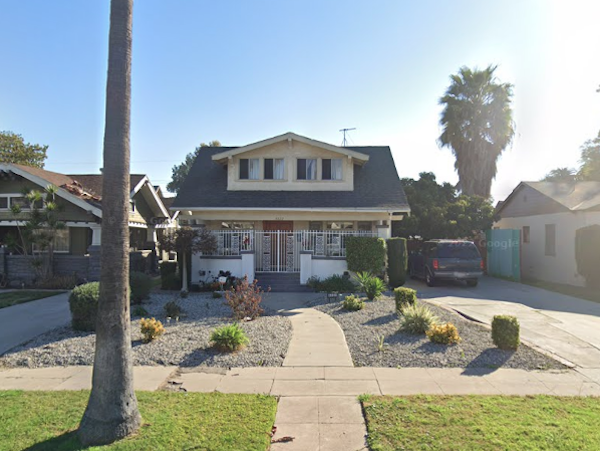
4. Ray Harryhausen’s Childhood Home
1913
4822 Cimarron Street, Chesterfield Square
(Private residence, do not disturb occupants)
Influential animator/filmmaker and Los Angeles native Ray Harryhausen (1920-2013) grew up in this very house in the 1920s and ’30s. Upon watching the 1933 film, ‘King Kong’ he was inspired to create his own stop-action animation. Though his career, Harryhausen befriended the likes of Ray Bradbury and Frank Capra and is known for bringing fantasy, prehistoric and mythological creatures to life in films like ‘Jason and the Argonauts’ (1963) and the ‘Clash of the Titans’ (1981), influencing everyone from Steven Spielberg to Tim Burton to George Lucas.
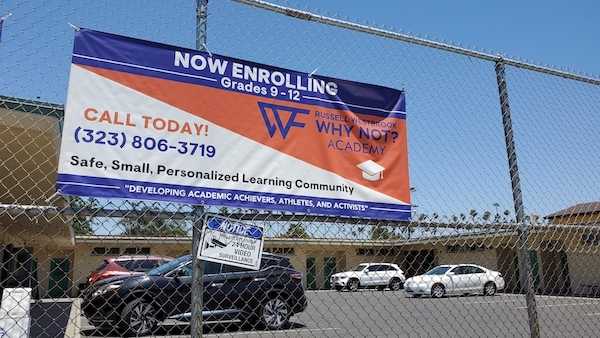
5. Russell Westbrook Why Not? High School
2021
1755 W 52nd St, South Los Angeles
Okay, okay, stop your snickering, NBA fans. This is an actual place, and for a good cause. This school, established in 2021, which utilizes the brick-and-mortar facilities (Hey now, no ‘”brick” jokes, okay?) of the now-closed St. Brigid Catholic School campus (built in 1960), is a partnership of the L.A. Promise Fund and Clippers star Russell Westbrook’s Why Not? Foundation to provide transformative educational opportunities for youths in the South Los Angeles area. It is the second educational academy founded by an active NBA player for underserved youth (the other was founded by Westbrook’s former Lakers teammate LeBron James in his native Akron, Ohio).
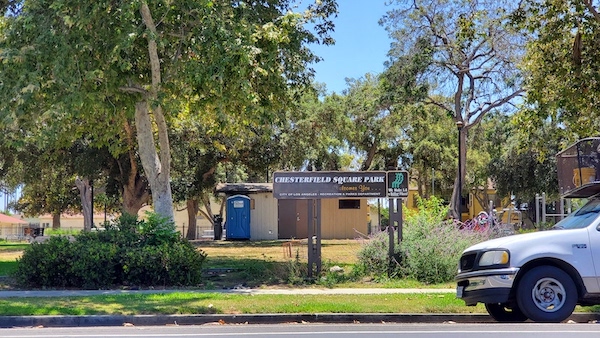
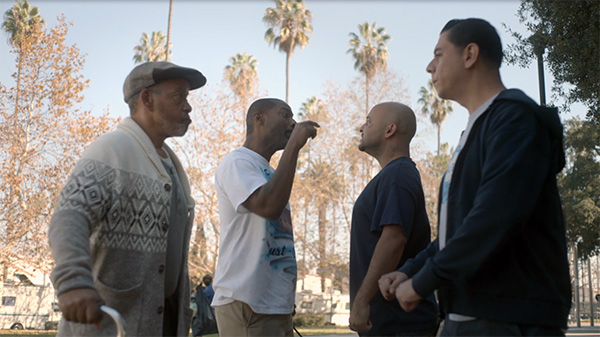
6. Chesterfield Square Park/Los Angeles Railway 8 Line
1910s
1950 W. 54th Street, Chesterfield Square.
Developed in the 1910s by brothers R.D. and Charles List, this neighborhood, in what was then a newly-annexed part of Los Angeles, took on the Anglophilic moniker of “Chesterfield Square” (to blend in with the decidedly British-named communities of Hyde Park, Windsor Park and Manchester Avenue). The characteristic Craftsman homes and Washingtonia palms were planted along its streets during its new home construction heydey of the 1920s, and the rest is history. This park, which features a pair of diagonally-crossed walk paths (a la O.G. Pershing Square in DTLA), was part of the original neighborhood layout, and was constructed alongside 54h Street – once a very transit-oriented street, as it was the western leg of the Los Angeles Railway’s 8 Line. Just a few blocks west is Metro’s Division 5 Arthur Winston Bus Yard, which is the direct descendant of the Los Angeles Railway’s Division 5 streetcar yard on the same location. Chesterfield Square Park appears in the 2022-2023 Hulu series This Fool at the end of the episode ‘Putazos’ (Season 1, Episode 2). R.I.P. Fat-Ass and Bust-A-Nut!
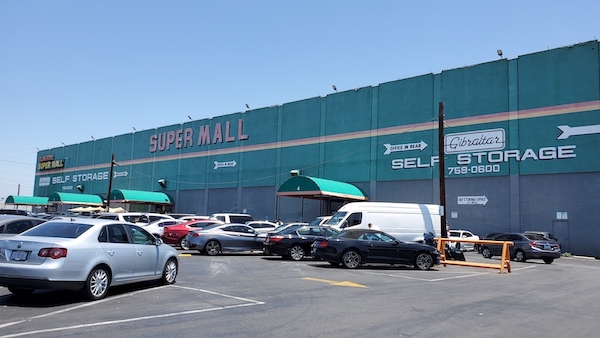
7. Slauson Super Mall
1986
1600 W. Slauson Avenue, Harvard Park.
Name-checked by nearby area native rapper Nipsey Hussle in his 2018 song, “Checc Me Out,” this gigantic indoor urban bazaar, which opened in 1986 (in a former storage warehouse building built in 1957) features over 100 vendors selling everything from clothing to shoes (which may or may not be legit brands), to mobile phones and accessories, to bicycles, to sporting goods, to…well, just about anything.
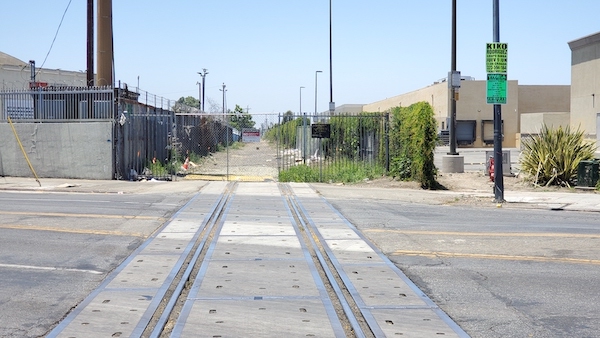
8. Santa Fe Railway Harbor Subdivision
1880s
Paralleling Slauson Avenue and Hyde Park Boulevard, South Los Angeles.
Just south of Slauson Avenue, the CicLAvia route crosses a set of railroad tracks…but there are no tracks to the east or west of Western Avenue. Whatup with that?! Well, this abandoned railroad right-of-way was an important part of the Atchison, Topeka and Santa Fe Railway (a.k.a. the Santa Fe) and Los Angeles transportation. It was built in the 1880s as the railroad’s access to local sea ports (initially Redondo Beach in 1888, and later extended through Torrance to Los Angeles Harbor in the 1920s). It provided freight transport access for local industries – particularly the oil industry in El Segundo, as well as passenger/local commuter rail service up until the early 20th century. The line was abandoned in 2002 with the opening of the Alameda Corridor, providing a shared, direct access to the Harbor for all of the freight railroads. It is now owned by Metro, where parts of it are already being used for the Crenshaw/LAX light rail line (Metro K Line), and a future extension to the South Bay. The eastern segment of the line along Slauson is slated to become a bicycle/pedestrian path.
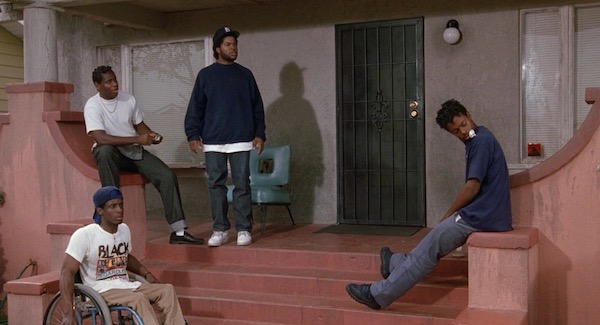
9. ‘Boyz N The Hood’ Filming Locations
1990
5900 Block of S. Cimarron St, Chesterfield Square.
(Private residences, do not disturb occupants)
Three 1923-built houses on this block just a few blocks west of the CicLAvia route were location shoots for the iconic 1991 John Singleton movie, ‘Boyz N The Hood.’ Filmed in October and November 1990, the locations include Brandi’s house (5906 S. Cimarron St.), Doughboy’s and Ricky’s house (5911 S. Cimarron St.) and Furious Styles’ house (5918 S Cimarron St.). Do not bother the residents, but if you do run across a resident on the block named Valerie Wilson, she’d be more than happy to talk about the movie with you.
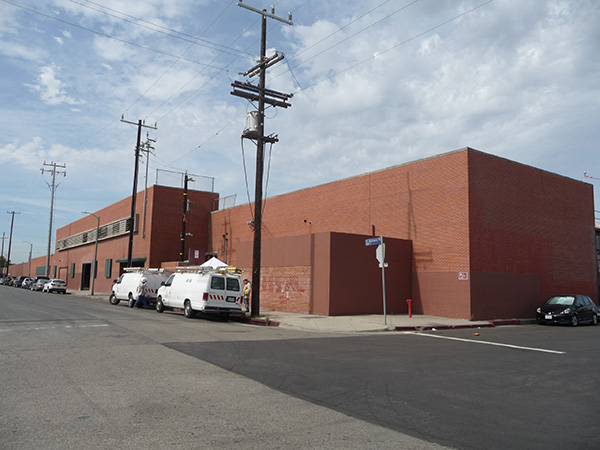
10. Site of Hostess Bakery Complex
1924
6007 S. St. Andrews Place, South Los Angeles.
A block west of the CicLAvia route, in a decidedly industrial area, was the regional bakery for Hostess Brands, which, for 88 years, baked Twinkies, Sno-Balls and Cupcakes and other Hostess goods for the area spanning from Mexico to Central California. Established in 1924, the complex contains seven buildings built between the 1920s and 1960s, with the largest being the Mid-Century Modern bakery building built in 1952. A railroad spur behind the building serving the bakery from the nearby Santa Fe Railway’s Harbor Subdivision was built to ship in raw ingredients and ship out baked goods. Operations shut down in November 2012 when the parent company, Continental Baking Company, declared bankruptcy. Part of the factory is now used by Art’isan Bakery.

11. Harvard Park
1535 West 62nd St., Harvard Park.
Officially known as the Jackie Tatum/Harvard Recreation Center (Tatum being the first Black woman to become General Manager of the City of Los Angeles’ Department of Recreation and Parks, circa 1990s), this large green space and athletic facility was where countless neighborhood youth played and became active in organized athletics. Two of them – former Major League Baseball (and Los Angeles Dodgers) players Darryl Strawberry and Eric Davis – played here in the park’s baseball diamonds as kids in the early 1970s for a youth league team called the Compton Moose. The park and its influence on the two MLB stars was the subject of the 2012 documentary film, ‘Harvard Park.’
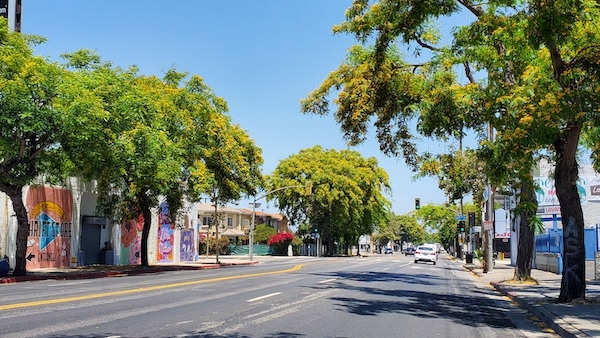
12. Tipu Street Trees
c. 1990s
Western Avenue between Slauson and Florence avenues.
It’s no secret that higher-income neighborhoods have more tree cover than their lower-income counterparts, so to combat this in the early-mid 1990s (most likely to address inequities of the 1992 Riots), shade-bearing street trees were planted along Western as a community improvement project. The majority of them are Tipu (Tipuana tipu) trees, which are Bolivian tropical shade trees, which bear feathery, yellow flowers that are currently in bloom. The tipus are common sights all over this area, perhaps being the South Los Angeles equivalent to the jacarandas of central Los Angeles.
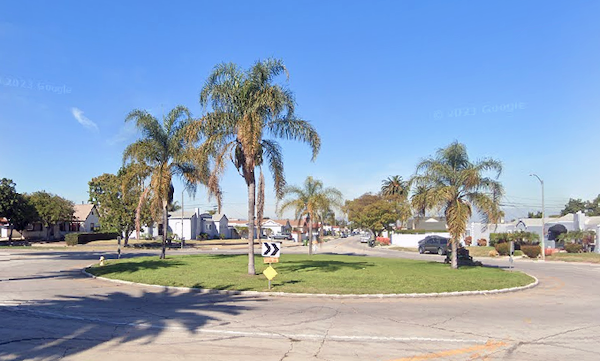
13. 76th Street Traffic Circles
c. 1920s
W. 76th Street at Gramercy Place and W. 76th Street at 5th Avenue, Manchester Square
Traffic circles might seem like a new method of traffic-calming in Los Angeles, but they have actually been around for a century. Two roundabouts along West 76th Street (west of Western Avenue), at Gramercy Place (known as “Circle Park”) and at 5th Avenue stand just four blocks from each other. Not much is known about them, but they were most likely built to bougie-fy the residential developments being built there back in The Roaring 20s. A number of houses in that part of town are Spanish Colonial Revival homes, with an L-shaped floorplan, built by residential developers Elwain Steincamp and William T. Richardson between the late 1920s and early 1940s. “Steincamps,” as real estate types refer to those homes built for middle-class subdivisions, also appear in nearby Hyde Park and Leimert Park. A larger traffic circle also appears in the adjacent Inglewood neighborhood of Morningside Park at 5th Avenue and 83rd Street.

14. DWP Boulder Dam Transmission Lines
1936
98th Street between Western Avenue and Success Avenue, South Los Angeles
Look east down the median of 98th Street where it crosses the CicLAvia route on Western Avenue. See those electric transmission towers? They head east some 266 miles all the way to Hoover Dam on the Colorado River (at the state border between Nevada and Arizona) where the combined 1,620 miles of copper conductor cable carry hydroelectric power generated from the dam to the City of Los Angeles. Built between 1933 and 1936 by the Los Angeles Bureau of Power and Light (which merged with the Los Angeles Bureau of Water Works and Supply in 1937 to become the Los Angeles Department of Water and Power), it was the vision of its chief engineer Ezra Scattergood, who was one of the early advocates for a Colorado River hydroelectric-generating dam built at Boulder Canyon in the early 1920s, eventually built as Boulder Dam (now Hoover Dam). The line was built through the Mojave Desert and into the Los Angeles area via the Cajon Pass, and was once the highest voltage long-distance power transmission system in the world. It ends several yards west of Western Avenue at a DWP distribution station, where it connects to Southern California Edison‘s power grid.
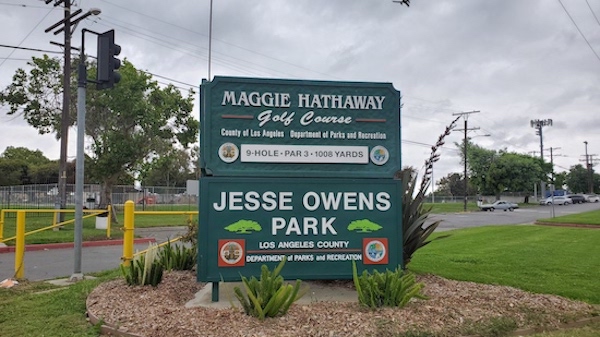
15. Jesse Owens Park
1950
9651 S. Western Avenue, Westmont
The Militant remembers passing by this place during his Lil’Mil days before the 105 Freeway existed, when his family would make that 7-mile surface street trek along Century Boulevard from the 110 to get to LAX. This 20-acre Los Angeles County Regional Park seems to have it all: A gymnasium, a swimming pool (including heated indoor pools), basketball and tennis courts, a Dodgers Field of Dreams baseball diamond, a children’s playground, a soccer field and a 9-hole, 3-par golf course. Originally built in the 1950s as Southwest Sportman’s Park, it was re-named in 1980 following the death of Olympian Jesse Owens, the Track and Field athlete who won 4 Gold Medals (the first American to do so in that sport) at the 1936 Summer Olympics in Berlin, Germany. As both an American and a Black man, his record-setting performance at the time was a symbolic “up yours” to Adolf Hitler, who was present at the games and attempted to use the Berlin Olympics as a propaganda vehicle for Nazi Germany and the supposed superiority of the Aryan race (Well that didn’t quite work out, did it?).
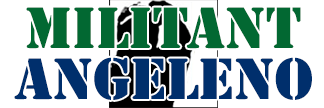
You must be logged in to post a comment.